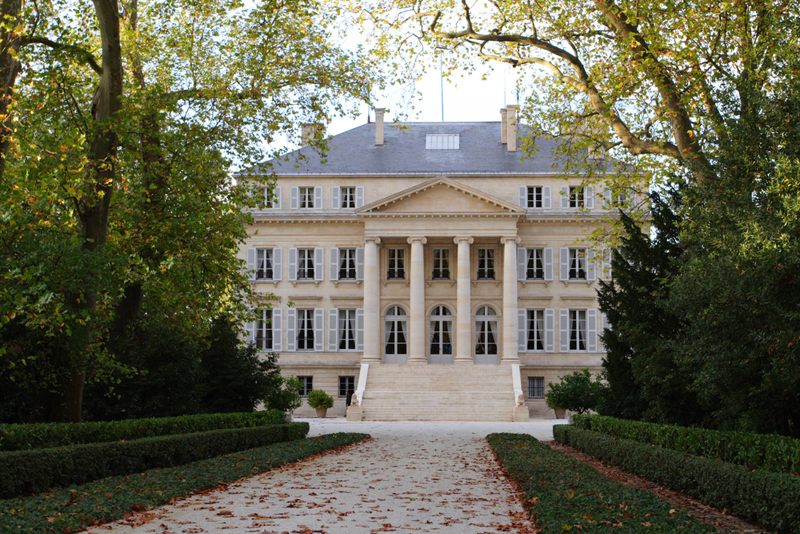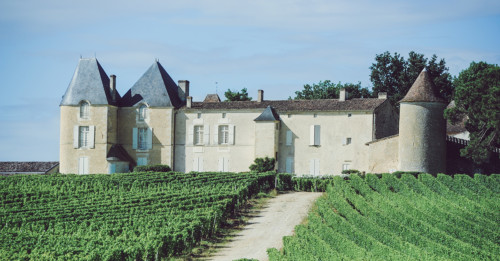Bordeaux produces arguably the most famous and highly coveted wine blend in the world. Like many regions with a long history, there’s a lot to learn. So, buckle up for a quick zip through the grapes, appellations, climate, and history that make Bordeaux wines so sought after.
Bordeaux In 60 Seconds:
- Bordeaux wines are world-renowned blends made with a predominant proportion of Cabernet Sauvignon or Merlot.
- Vintage variance is particularly important in Bordeaux. Cellar-worthy vintages can surge in value over generations.
- Bordeaux has three main styles: Left-Bank blend (Cabernet Sauvignon dominant), Right-Bank blend (Merlot dominant) and White blend (Semillon and Sauvignon Blanc).
- Despite their acclaim, quality Bordeaux wines can be found at almost every price-point, some as affordable as $15.
Why is Bordeaux Wine Famous?
The success of Bordeaux can be boiled down to one simple trait: its location. The region’s climate and soil are ideal for high quality viticulture. Meanwhile, its close proximity to a major port city has, for centuries, allowed local winemakers easy access to export markets around the world.
In the early days of international wine trade, Bordeaux capitalized on the ships and wealthy merchants that filled its port, making sure to send them off with wine. As wealthy merchants returned to their home countries, the region’s acclaim spread. Soon, trading classes in Great Britain and the Netherlands began collecting Bordeaux wines, cementing its reputation as one of the fine wines of the upper classes.
Where is Bordeaux Located?
The Bordeaux region is located on the west coast of central France. The Bay of Biscay leads into the Gironde estuary, which cuts through the centre of Bordeaux creating two important winemaking regions: the left bank and the right bank. These regions form the backbone of Bordeaux’s identity.
Being so close to the Atlantic, rainfall and humidity create challenges during the grape growing months, which makes vintage a crucial consideration when choosing a bottle. On the flip side, the effects of the Gulf Stream provide warming effects, helping extend the growing season.
Grape Varieties in the Bordeaux Blend
A red Bordeaux blend can incorporate up to six different grapes: Merlot, Cabernet Sauvignon, Cabernet Franc, Petit Verdot, Malbec, and Carménère. The latter two rarely make appearances, but when they do, they appear only in small quantities (less than 2 percent of the blend). Merlot and Cabernet Sauvignon are instead the dominant players and are both necessary to be considered a Bordeaux blend. The proportion of each depends on which bank of the Gironde estuary the winery sits on.
If the winery is on the left bank, the blend created will have more Cabernet Sauvignon than Merlot. If the winery is instead on the right bank of the river, the wine will have more Merlot in the blend than Cabernet Sauvignon.
https://www.facebook.com/video.php?v=1053896571344498
This determination allows us to make a few generalizations about the wine depending on the bank on which it was created. Here are some general rules:
Left bank blends tend to be higher in tannins, alcohol, and acidity. They are powerful, rich wines that are said to age a bit better than wines from the right bank. The left bank is also home to many of the properties that made the region famous.
Right bank blends tend to be softer, less tannic, and lower in alcohol and acidity. With Merlot as the dominant grape, these wines are much juicier and usually ready to drink earlier than bottles from the left bank.
What is White Bordeaux?
White Bordeaux quietly sits in the shadows of red Bordeaux — with the exception of Sauternes, which is regarded as one of the world’s most desirable and sought-after dessert wines.
Sémillon and Sauvignon Blanc are the primary varieties in the region’s white blends. Contrary to generalizations, single-varietal Sauvignon Blanc wines are allowed and are often highly expressive with citrus and green apple flavors.
The dessert wines of Sauternes are made mostly from Semillon due to its thin skin and susceptibility to botrytis. The highest quality wines saintain racy acidity, with peach, apricot and citrus flavors along with a waxy vanilla viscosity.
 Château Margaux is one of the five First Growth wine estates in Bordeaux.
Château Margaux is one of the five First Growth wine estates in Bordeaux.Understanding the Bordeaux Classification System
Wine laws in Europe have a reputation for being incredibly complicated. Bordeaux holds its fair share of the blame for this, with three different systems used to identify the quality of the region’s appellations.
The Classification of 1855 covers the Médoc region on the left bank and Sauternes. Grand Crus Classé wines occupy the top tier of this system followed by Cru Artisan and Cru Bourgeois wines, and finally Bordeaux Superieur and Generic Bordeaux. Graves, a region located on the lower left bank has no ranking; all wines made here can be labeled Cru-Classé.
On the right bank, the two major appellations to know are Pomerol and Saint-Emilion. The former has no classifications while the latter is split up into top-level Premier Grand Cru Classé wines, which are further split into an A category (the best) and a B category. Below that come Grand Cru Classe wines and finally Grand Cru.
How Much Does Good Bordeaux Cost?
Thanks to its popularity, Bordeaux can be found at all levels of quality and price. High quality bottles from smaller producers can be drunk on release and found for between $15 and $25. Age-worthy Bordeaux from the top producers start at around $30, but regularly retail for significantly more than this.
The history of Bordeaux makes it a fabulous wine for a special occasion, whether that occasion is celebrating a life event or simply celebrating a night in with the ones you love. Thankfully, there are bottles priced for all occasions.
